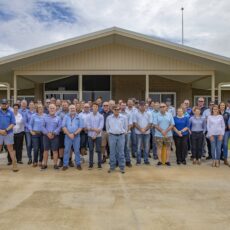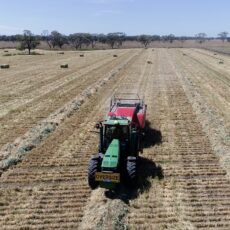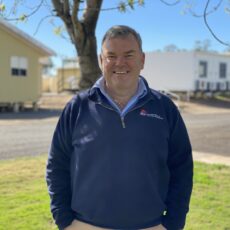New research funded by North West Local Land Services has put a monetary value on how controlling feral pigs can benefit farmers’ hip pockets.
AgEcon was contracted by LLS to conduct the research which revealed that farmers could save up to $100 a hectare by implementing strong and strategic measures to control feral pig numbers.
North West LLS senior biosecurity officer, David Lindsay, said the research revealed the extent of damage on numerous crop varietals that feral pigs can inflict.
“Research found that chickpeas, a high value crop that is subject to extensive damage from feral pigs, had the highest potential net benefit of undertaking feral pig control, up to $100 a hectare,” Mr Lindsay said.
“There is a range of figures for every crop, from the lower to higher end of cost.
“Farmers could lose $70 a hectare on cotton, $23 a hectare on wheat, $32 a hectare on sorghum and even $20 on dry sheep equivalents (dse) from damage caused by feral pigs.
“Factors such as crop yield, number of pigs and commodity prices have to be considered to establish cost deficiencies caused by pigs.
“Those losses will be on the lower end if pig numbers are controlled.”
Pig numbers had declined dramatically during the drought, but thanks to an abundance of good pastures and plenty of water sources, the
population of feral pigs is exploding.
“The quality of the conditions is resulting in the sows being more fertile and producing bigger litters,” Mr Lindsay said.
“Subsequently more piglets are surviving and growing bigger, faster.
“Pigs start breeding when they get to 25 kilograms, which means they are breeding sooner.”
Boggabri primary producer and agronomist, Richard Avendano, said he has seen an increase in pig numbers since Christmas 2020.
“We are noticing increased damage in our crops caused by pigs, which seem to love the sorghum and mung beans the most,” Mr Avendano said.
“We are now implementing increased control measures to try and keep the numbers under control and minimise further damage to crops and the land.”
Keeping numbers under control however, is proving difficult as pigs flourish in the ideal conditions, with Mr Lindsay saying that it will take a team effort to gain the ascendancy.
“The research has shown that landowners need to take out 80 per cent of pigs on property to decrease numbers.
For example, if there are 100 pigs on property you would have to kill 80 or else you will still have the same number next year,” Mr Lindsay said.
“LLS needs landholders to work together as a group, and if everyone works together and can kill 80 per cent or more, numbers will be under control.
“Controlling feral pigs remains a high priority in the north west as they are known to cause significant damage to environmentally sensitive areas and farming enterprises.
“Additionally, they carry diseases including brucellosis, leptospirosis and Q fever, all of which can effect humans.”
Part of the research was investigating the effectiveness of control measures, with baiting with 1080 poison and aerial shooting shown to be the most efficient.
“Prior to seed set it has been shown that baiting is the best option, and then after seed has set, aerial shooting is best,” Mr Lindsay said.
Mr Lindsay also encouraged landholders to contact LLS to discuss options for their property and access further information on control measures on the North West LLS website.
Read more like this:
- National Parks and Wildlife Service granted a major funding boost
- Narrabri Pistol Club hosts Metallic Silhouette 200-metre Big Bore State Championships
- Local horse trainer selected to compete nationwide











